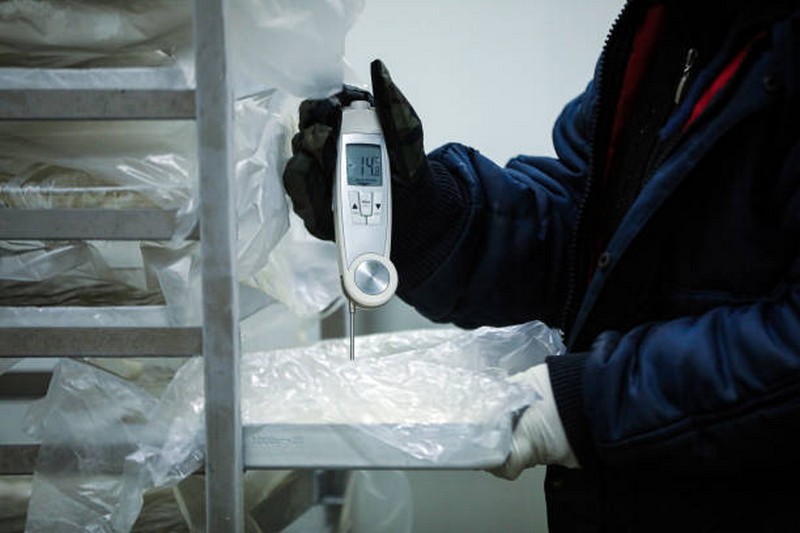One of the most important steps in the complex field of cold storage, installing a cold room requires extreme care. When it comes to temperature-controlled storage, whether for food, pharmaceuticals, or any other business, a well completed installation is essential for keeping products intact and operations running smoothly. Nevertheless, there are several obstacles that might derail a well-planned cold room construction. Make sure your cold room is functional and efficient by avoiding these 10 frequent blunders.
1. Inadequate Planning
The foundation of a successful cold room installation begins with thorough planning. Neglecting to account for future growth, ignoring local regulations, or underestimating the size and capacity needed can lead to costly adjustments down the line. Ensure a comprehensive plan is in place, considering all variables from the get-go.
2. Overlooking Insulation Quality
Insulation is the cornerstone of any cold room’s efficiency. Opting for lower-quality insulation to cut costs can lead to higher energy bills and compromised product quality due to temperature fluctuations. Invest in high-quality insulation materials that offer superior thermal resistance.
3. Ignoring Temperature Requirements
Different products require specific temperature ranges for optimal preservation. A common oversight is not customizing the cold room’s temperature settings based on the products it will store. Tailor the installation to meet the precise temperature and humidity needs of your inventory.
4. Neglecting Proper Ventilation
Proper airflow is essential for maintaining uniform temperature throughout the cold room. Failing to incorporate adequate ventilation systems can result in hot spots and spoilage. Ensure the design includes efficient airflow mechanisms to distribute cold air evenly.
5. Choosing the Wrong Location
The physical location of your cold room can significantly impact its performance. Installing it in an area prone to direct sunlight or high ambient temperatures without considering external insulation or cooling can undermine its efficiency. Select a location that minimizes exposure to external heat sources.
6. Underestimating Energy Efficiency
In the quest to reduce installation costs, one might opt for cheaper, less energy-efficient refrigeration systems. However, this short-term saving can translate into long-term expenses due to higher operational costs. Choose energy-efficient systems that reduce electricity consumption and carbon footprint.
7. Skimping on Quality Refrigeration Components
Using low-grade refrigeration components can lead to frequent breakdowns and maintenance issues. Invest in high-quality compressors, evaporators, and condensers that guarantee reliability and longevity, ensuring your cold room operates smoothly over the years.
8. Poor Floor Design
The flooring of a cold room is often overlooked during the installation process. However, inadequate flooring can lead to condensation issues, slip hazards, and difficulty in cleaning. Opt for insulated, non-slip flooring materials designed for cold environments.
9. Forgetting About Safety Features
Safety within a cold room extends beyond temperature control. Neglecting to include emergency exits, adequate lighting, and alarms can pose significant risks to personnel. Incorporate comprehensive safety features that comply with industry standards.
10. DIY Installation Without Professional Guidance
The complexity of installing a cold room often tempts businesses to undertake the project independently to save costs. However, without the expertise of professionals, this DIY approach can result in inefficiencies and non-compliance with regulations. Engage with experienced installers who can ensure a seamless and compliant installation.
Ensuring a Smooth Installation
Avoiding these common mistakes requires a diligent approach and the willingness to invest in quality from the outset. Here are additional tips to ensure a smooth installation process:
- Conduct a Needs Assessment: Before embarking on the installation, thoroughly assess your storage needs, including the types of products to be stored and their specific requirements.
- Consult with Experts: Engage with cold room installation professionals early in the planning phase. Their expertise can help tailor the design to your precise needs and avoid pitfalls.
- Stay Informed on Regulations: Familiarize yourself with local building codes and industry regulations to ensure your cold room meets all legal requirements.
- Focus on Long-Term Value: Prioritize investments that offer long-term benefits, such as energy savings and reduced maintenance costs, over short-term savings.
A well-executed cold room installation is an important investment for enterprises that need regulated storage options. By avoiding these frequent pitfalls and taking a strategic approach to planning and execution, organizations can guarantee that their cool room installation is efficient and successful. Remember that the aim is not only to establish a cool room, but to create a dependable, efficient storage environment that will protect your goods and support your operating goals for years to come.

